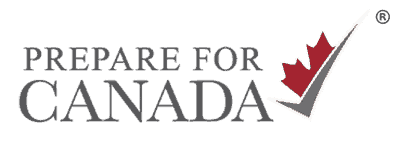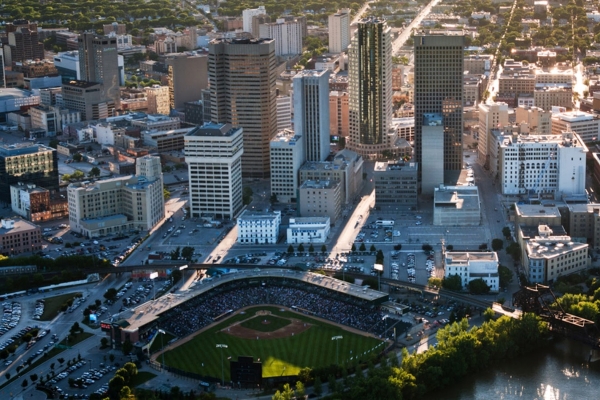
Winnipeg, Manitoba is one of many destination cities to consider if you are moving to Canada. Choosing the right city is a major decision and will affect your quality of life and economic success. So, it’s vital to research if Winnipeg is the right city for you. Canada is a large country with regional, cultural, and economic differences. Depending on where you choose to live, you could see vast differences in the cost of living, housing prices, and job opportunities. That’s why choosing the right city plays a large role in your financial success once you arrive. This helpful guide will give you a clear picture of life in Winnipeg covering everything from housing costs to job opportunities.
About Winnipeg, Manitoba
Winnipeg is the capital city of Manitoba and the largest city in the province. It lies in the eastern part of the Canadian Prairies in Western Canada.
Advertisement:
The city is known as the “Gateway to the West” connecting Ontario to the Prairie provinces. It is a railway and transportation hub with a diversified economy. The Manitoba Provincial Nominee Program brought immigrants to Canada in record numbers and Winnipeg became home to thousands of newcomers. So it’s also known for being a multicultural city.
Advertisement:
The city is named after Lake Winnipeg and has four lakes running through it. It is also close to many Canadian Shield lakes and parks.
It was originally a trading post for Indigenous people before the arrival of European settlers. Winnipeg was officially incorporated as a city in 1873 and rapidly grew after the expansion of the Canadian Pacific Railway in 1881. It was Canada’s third-largest city in 1911. Today, it is the sixth-largest city in the country.
How Many People Live in Winnipeg, Manitoba?
The City of Winnipeg has a population of 749,607 as of the 2021 Census. The Winnipeg Metropolitan Region includes 18 surrounding municipalities with 834,678 residents. The city has a diverse population with a high number of people of European descent and the highest concentration of Aboriginal people in Canada.
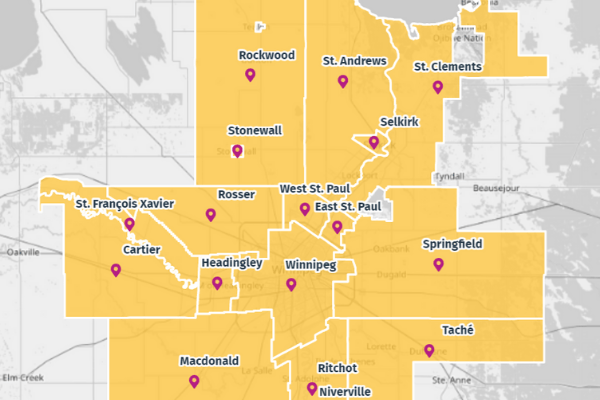
How to Find a Job & Build a Career in Winnipeg
Winnipeg’s Local Economy
Winnipeg’s economy is rated as one of the fastest-growing among Canada’s major cities. It is also one of the country’s most diversified economies including manufacturing, financial services, IT, and more.
The manufacturing sector ranges from food and beverage to farm equipment, buses, steel products, electrical components, aerospace components, chemicals, plastic, and more.
Advertisement:
Winnipeg is also home to the Royal Canadian Mint, which produces all of Canada’s circulating coinage. The Mint also manufactures coins for other countries, as well as medals, gold, silver, palladium, and platinum bullion coins.
The financial service sector is one of the largest in the country and the headquarters for some of Canada’s biggest insurance companies and investment firms are in Winnipeg.
The key sectors in Winnipeg include:
- Advanced manufacturing
- Aerospace
- Agribusiness
- Creative industries
- Financial services
- Furniture & apparel industries
- Information & communication technology
- Life sciences
- Transportation & distribution.
Major Employers in Winnipeg
This city is home to large companies across many industries. Some of the top employers in Winnipeg are:
- Cargill Ltd.
- James Richardson & Sons
- CanWest Global Communications
- Manitoba Liquor & Lotteries Corporation
- Canada Life Assurance Company (Canada Life)
- Great-West Lifeco
- Investors Group
- The Wawanesa Mutual Insurance Co.
- Manitoba Blue Cross
- Boeing Canada Technology
- Princess Auto
- Ceridian Canada.
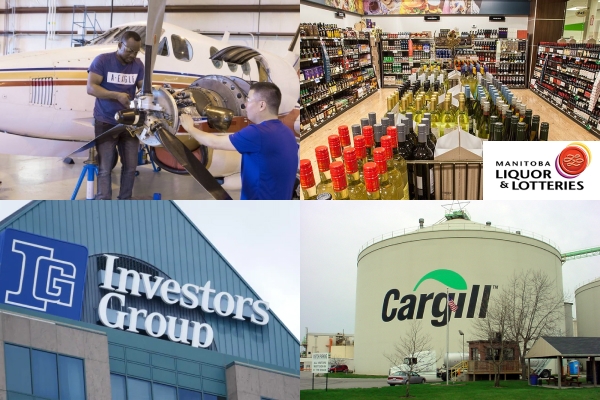
Career Pathways in Winnipeg
Newcomers have access to several resources to search for career opportunities in the Winnipeg area. You can get help with your job search by working with Immigrant Centre Manitoba Inc., Manitoba Start, Neighborhood Empowerment and Resource Centre, and SEED Winnipeg Inc. You can also work with local employment recruiters such as Pinnacle, Robert Half, and David Aplin Group.
For information, tools, free webinars, and more visit our Finding a Job in Canada resource page. Get the help you need to achieve your career goals in Canada!
The Winnipeg Housing Market
Choosing a place to call home in Winnipeg is another important decision to help you settle in Winnipeg. The city offers many diverse neighbourhoods to choose from. Your physical location and the street you live on will affect you daily. When choosing a location, consider factors such as access to transit, stores, schools, hospitals, childcare, and your workplace.
Is Housing Expensive in Winnipeg, Manitoba?
Over the past few years, Winnipeg experienced a significant rise in house prices. For example, there was a 115% increase in the average price of a new house and a 170% increase in the average price of a resale house over the past decade. Because of the population growth and demand for more homes, house prices are expected to continue increasing.
Nevertheless, house prices in Winnipeg are still low compared to other cities in Canada. For the last several years the strongest demand and most new homes built have been in the South area of the City such as south St. Boniface, south St. Vital and Fort Garry. Single-family dwellings outnumber the amount of multi-family dwellings built.
Related Post:
Renting in Canada: What Newcomers Need to Know
Finding a Place to Rent in Winnipeg
Searching online is an easy way to find places to rent. Use Rentals for Newcomers to search for available rental units in Winnipeg. Here, you can also find current rental prices in Winnipeg.
Rental costs can start as low as $800 per month. The average rent amount for an apartment in Winnipeg is $943 for a Bachelor, $1,204 for a 1-bedroom, $1,515 for a 2-bedroom, and $2,192 for a 3-bedroom.

Buying a Home in Winnipeg
Housing prices in Winnipeg are significantly more affordable compared to other large cities in Canada. In many cases, housing prices are half the amount compared to cities like Toronto or Vancouver.
According to a Royal Lepage House Price Survey, the average price of a home in Winnipeg is $357,200 as of the last quarter of 2021. The is a 9.6% increase year over year. The median cost of a single-family detached home is $390,800 and the median price of a condo is $233,600. Find out more about buying your first home in Canada: First Time Home Buyer: Newcomer Tips.
Driving & Public Transit in Winnipeg
Driving in Winnipeg, Manitoba
Winnipeg has a well-connected road system. The city has highways in all directions from the city, making it easy to get around. The Trans-Canada Highway runs through the city (east to west), and circles around on the Perimeter Highway, referred to as the beltway. Provincial Trunk Highway 75 connects to the United States and is the busiest border crossing on the Prairies.
All drivers must have a Manitoba driver’s licence. It’s important to understand the rules of the road and have strong winter driving skills.
Get more information about driving in Canada:
Driving in Canada: 10 Essential Facts to Know
Driving Test in Canada: A Full Guide
Tips for Winter Driving to Ensure Your Safety
Winnipeg Public Transit
Winnipeg Transit supplies public bus service in the city. It runs 84 fixed routes. The buses run usually from 6 a.m. until past midnight. The transit website offers a trip planner where you can type your location and find out how to get to your destination. For transit fares click here.
You can travel by air using the Winnipeg James Armstrong Richardson International Airport. The city is also a railway hub. You can take the Via Rail train at Union Station.
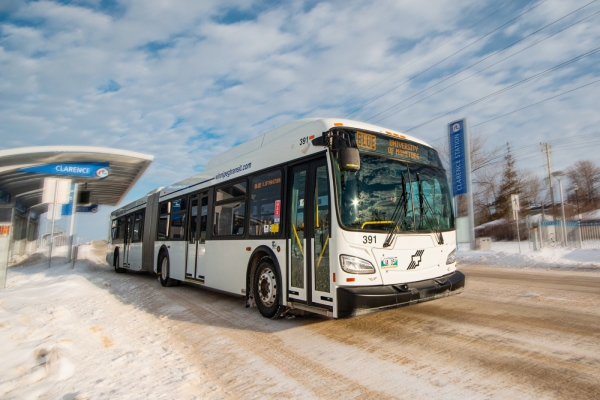
Community Support for Newcomers
Winnipeg is a popular landing place for new immigrants. And there are many community organizations to support and help you when you move to the city. Some of the top organizations helping include Immigration Partnership Winnipeg, Immigrant and Refugee Community Organization of Manitoba, Neighbourhood Immigrant Settlement Workers Program, and YMCA-YWCA of Winnipeg. Get a full list through the Immigrant Centre website.
Language Support in Winnipeg
Several local organizations offer language services and support to permanent residents. Community groups that offer language assistance include Enhanced English Skills for Employment (EESE), EDGE Skills Centre, Heartland International English School, and The University of Winnipeg-English for Specific Purposes Program.
For more information, tools, and free webinars about living in Canada visit our Settling in Canada resource page. We’ll help you to settle in Canada successfully!
Personal Finance & Banking
Setting up a bank account and getting your finances in order when arriving in Canada is important. It is also an easy process to complete for permanent residents. You can visit a local bank or credit union to open an account. They can also help you apply for a credit card, line of credit, mortgage, and other financial products.
Get more banking tips for newcomers:
Top 10 Financial Steps to Take Before You Leave for Canada
Move to Canada | Transferring Cash & Valuables
Open a Bank Account Before Arriving in Canada
For more information about your financial first steps in Canada, visit our banking in Canada resource page. Get the information you need to manage your finances in Canada!
Winnipeg’s Education System
The Government of Manitoba oversees the school system in the province. This includes all elementary, high school, and post-secondary institutions.
Elementary and High School Education
There are seven school divisions in Winnipeg. The largest is the Winnipeg School Division which includes 77 schools and over 5,300 staff members. It teaches more than 33,000 students.
The other divisions are St. James-Assiniboia School Division with 15 elementary schools, six middle schools, and four high schools, Pembina Trails School Division, Seven Oaks School Division, The Franco-Manitoban School Division, River East Transcona School Division, and The Louis Riel School Division. Parents can also choose to send their children to private or religious schools.
Post Secondary Institutions
Each year, thousands of international students study at post-secondary schools in Winnipeg such as:
- The University of Manitoba is the oldest university in Western Canada. It offers over 90 degrees, diplomas, and certificates, more than 60 at the undergraduate level.
- Université de Saint-Boniface is the only French-language university in all of western Canada.
- University of Winnipeg (U of W) has undergraduate faculties of art, business and economics, education, science, and theology and offers also graduate programs.
- Canadian Mennonite University is a private Christian university in the Anabaptist tradition.
- Red River College is Manitoba’s largest institute for applied learning with more than 200 full-time and part-time programs.
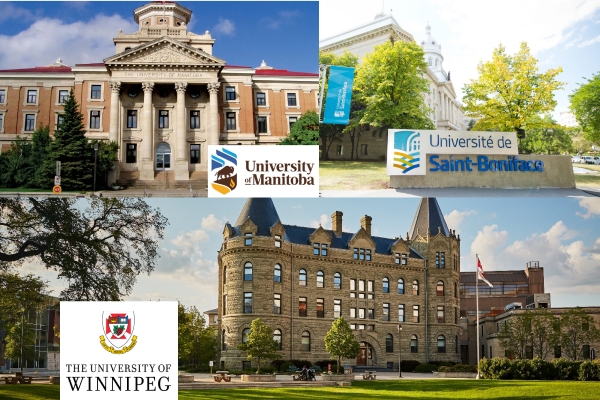
Read more about education in Canada:
Schooling in Canada | A Look at the Education System
Higher Education Offers Benefits to Newcomers
Where To Get Medical Care in Winnipeg, Manitoba
Winnipeg provides medical care options through its hospital network.
Winnipeg’s major hospitals include Health Sciences Centre, Concordia Hospital, Deer Lodge Centre, Grace Hospital, Saint Boniface General Hospital, Seven Oaks General Hospital, Victoria General Hospital, and The Children’s Hospital of Winnipeg
Residents of Manitoba are eligible for government health coverage. Newcomers should apply for Manitoba Health Card which they show every time they need medical services. The Government of Manitoba does not cover some health care services, but most employers provide additional health insurance.
For prescription drugs and some services that Manitoba Health does not cover, you can buy additional  .
.
How to Find a Family Doctor in Winnipeg
After obtaining health coverage, a new resident of Manitoba must find a family physician. Family doctors can prescribe drugs and refer their patients to specialists or hospitals if necessary. The Family Doctor Finder provides an up-to-date list of Winnipeg family physicians accepting new patients.
If you do not have a family doctor, you can go to a walk-in clinic. Doctors at walk-in clinics can also give prescriptions and refer patients to specialists and hospitals.
Get more information about health care in Canada: Steps to Access Free Health Care in Canada
What is Day-to-Day Life Like in Winnipeg?
Things to Do in Winnipeg
The city of Winnipeg has a lot to offer its residents. It has a combination of attractions, sports, nightlife, and natural landscapes. There is something to do for everyone in the family.
Public Spaces & Attractions
Manitoba’s capital enjoys an exciting cultural life. There are many art galleries and performing arts venues in Winnipeg. The largest gallery in Manitoba, the Winnipeg Art Gallery has the biggest collection of contemporary Inuit art in the world.
Centennial Concert Hall is the primary concert venue of the Winnipeg Symphony Orchestra, the Manitoba Opera, and the Royal Winnipeg Ballet. Over 250 theatre performances are given yearly at the Manitoba Theatre Centre.
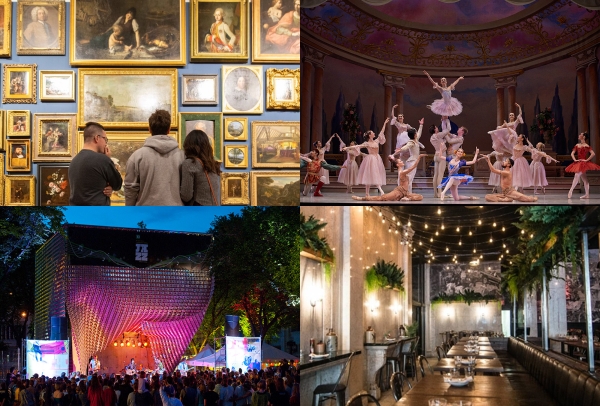
The city hosts Folklorama, the largest and longest-running multicultural festival in the world. Each year in August different countries are presented at 40 to 45 pavilions, and approximately 3,000 entertainers perform at more than 1,500 shows.
Restaurants & Nightlife
Winnipeg is known for its local restaurants. Throughout the city, you can find cuisine from around the world. You can dine at nationally recognized fine dining hot spots. The city hosts festivals throughout the year including Festival du Voyageur, Jazz Winnipeg Festival, Winnipeg Folk Festival, Winnipeg Fringe Theatre Festival, Pride Winnipeg, and Canad Inns Winter Wonderland.
Nature & Natural Landscapes
Even though it’s known for its cold winter weather, Winnipeg features stunning natural landscapes. Some of the most popular are Clearwater Lake, Clearwater Lake Caves, Riding Mountain National Park, Wekusko Falls, Pisew Falls, Steep Rock and Tramping Lake Pictographs.

Sporting Events & Concerts
The city is home to the Winnipeg Jets of the National Hockey League, Winnipeg Blue Bombers of the Canadian Football League, and Manitoba Moose of the American Hockey League. It is also home to other minor sports teams. You can see live music at several popular venues such as Centennial Concert Hall, West End Cultural Centre, Burton Cummings Theatre, and many others.
Culture & Diversity In Winnipeg
Diversity
Winnipeg has a diverse population. There are over 180,000 immigrants in the city, which is close to 25% of the population. And this number continues to rise each year. Close to 15,000 new immigrants move to the city annually.
Winnipeg has a large Filipino community. It is estimated there are over 60,000 residents who came from the Philippines. The city is also known for its large Aboriginal community. There are over 75,000 people of Aboriginal descent in the city. There is a large number of immigrants from India and China.
Some of the cultural festivals that take place each year include the Asian Canadian Festival, Canada’s National Ukrainian Festival, and the Winnipeg Chinatown Street Festival.

Worship
Winnipeg is a predominantly Christian community. About two-thirds identify as Christian. Close to 30% of residents have no religious affiliation. Other religions common to the city include Muslim, Jewish, Sikh, and Hindu.
The Weather in Winnipeg
Winnipeg is one of the sunniest cities in Canada. However, clear skies don’t necessarily mean warm weather. Manitoba’s capital experiences very cold and windy winters, which last from November to March. The average snow depth in January is 20 cm and the temperatures are between -22.8°C and -12.7°C. Extremes are not unusual. The lowest recorded temperature was at -45°C in February 1966.
Strong winds can make winter temperatures feel even colder than the actual temperatures. The windchill is the index to show how cold the weather feels to the average person. In Winnipeg, there are about 49 days a year with a windchill of -30°C or less. The coldest wind chill was -57.1°C in January 1996.
Summers are from May to August. Temperatures in July are usually between 19.5°C and 25.5°C. The highest temperature recorded in summer was 40.6°C in 1949. The city is hit by thunderstorms and sometimes tornadoes in spring and summer. Winnipeg can experience severe flooding because of its flat topography and melting snow.
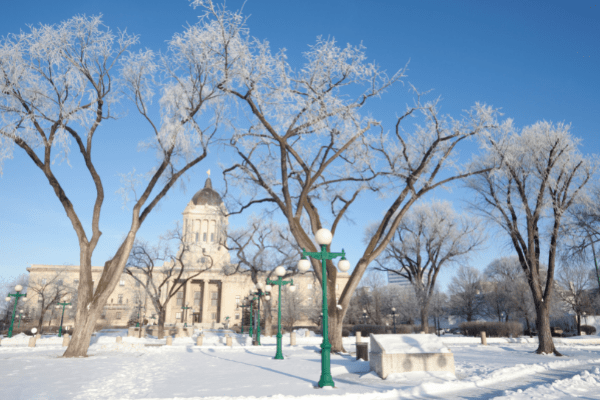
Common Questions Immigrants Ask About Living in Winnipeg
Is Winnipeg a Good Place for Immigrants?
Thousands of immigrants move to the city each year. Winnipeg is a popular choice among immigrants. It offers big city living with a more affordable cost of living. It offers a better work-life balance than other major cities.
What are Some Disadvantages of Living in Winnipeg for New Immigrants?
The major drawback of living in Winnipeg is the very cold winter weather. If you don’t like snow, it’s probably not the city for you. But, despite the chilly temperatures, Winnipeggers know how to embrace the cold, especially during Canad Inns Winter Wonderland.
Other issues that may concern you include the limited public transit system. The city also has a high crime rate compared to other Canadian cities.
What are the Benefits of Living in Winnipeg?
Newcomers choose to move to Winnipeg for many reasons. The city offers affordable housing, a low cost of living, and diverse employment options. It also has a multicultural and diverse population. In addition to the city’s great culture, you have access to a strong health care system and world-class universities.
